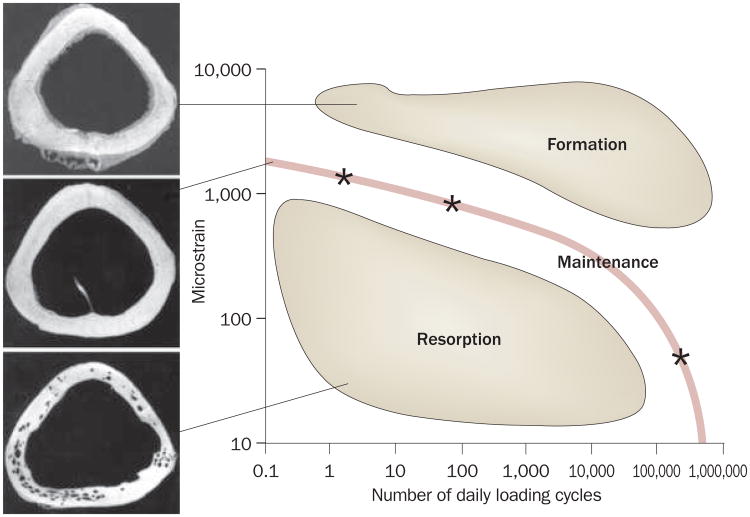Figure 2.
Interrelationship between loading cycles and bone adaptation. Using the turkey ulna model to determine the nonlinear interrelationship of cycle number and strain magnitude, bone mass can be maintained through a number of distinct strategies (line); bone is preserved with either four cycles per day of 2,000 microstrain, 100 cycles per day of 1,000 microstrain, or hundreds of thousands of cycles of signals of well below 10 microstrain (each represented as a star).34 These data indicate that falling below this ‘preferred strain history’ would stimulate bone loss, while exceeding this interrelationship would stimulate bone gain.

